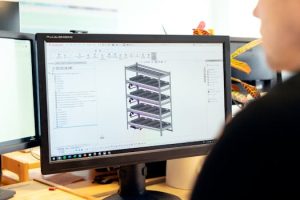The Empathic Infrastructure: Cities That Understand Movement
The modern world is more connected than ever before, with advancements in technology and transportation making it easier for people to travel and interact with each other. As a result, cities are constantly growing and evolving to accommodate this movement. However, with this growth comes a great responsibility for city planners and developers to create infrastructure that not only supports physical movement, but also considers the emotional and psychological needs of its inhabitants. This empathic infrastructure is the key to creating cities that truly understand movement and promote a sense of well-being and belonging for its residents.
The Importance of Movement in Cities
Movement is inherent to human nature and is essential for both physical and mental health. Without movement, our muscles and joints become weak, and our bodies are more susceptible to diseases. On a psychological level, movement can improve mood, reduce stress, and increase focus and productivity. This is why cities should be designed with movement in mind, ensuring that its residents have easy access to modes of transportation and are encouraged to be physically active.
The Physical Aspect of Empathic Infrastructure
When we think about empathic infrastructure, we often focus on the emotional and social aspects. However, it is equally important to consider the physical infrastructure that supports movement in cities. This includes transportation systems, sidewalks, and bike lanes. These features not only make it easier for people to get around, but also promote a healthier and more active lifestyle. Cities that prioritize the physical aspect of empathic infrastructure see a decrease in car dependency and an increase in walking and biking, which ultimately leads to a cleaner and more sustainable environment.
The Psychological Aspect of Empathic Infrastructure
Beyond the physical infrastructure, empathic cities also take into account the psychological needs of its residents. This includes creating spaces that promote social interaction and a sense of community, as well as providing access to nature and green spaces. These elements play a crucial role in fostering a sense of well-being and belonging among city dwellers. Studies have shown that people feel happier and more connected when they have access to green space, which can greatly improve their overall quality of life.
Examples of Empathic Infrastructure in Cities
There are many cities around the world that are pioneering the concept of empathic infrastructure, creating spaces that not only support movement but also consider the emotional and psychological well-being of their residents.
Copenhagen, Denmark
Copenhagen is often considered one of the most bike-friendly cities in the world, with over 50% of its residents commuting by bicycle every day. This is due in part to the city’s extensive biking infrastructure, which includes over 250 miles of bike lanes and bridges. In addition, the city has also prioritized creating green spaces and pedestrian-friendly areas, making it a more livable and empathic city.
Curitiba, Brazil
Curitiba is known for its innovative transportation system, which includes a Bus Rapid Transit (BRT) system that efficiently moves residents throughout the city. This system not only reduces congestion and air pollution, but also creates a more equal and accessible mode of transportation for all residents. In addition, the city has also implemented a number of parks and green spaces that serve as gathering places for its residents.
Conclusion
In today’s fast-paced world, it is crucial for cities to not only prioritize physical movement but also consider the emotional and psychological impact of their infrastructure. Empathic cities understand the importance of promoting well-being and creating a sense of community for its residents. By prioritizing empathic infrastructure, cities can create a healthier, happier, and more connected population, ultimately leading to a better and more sustainable future.





